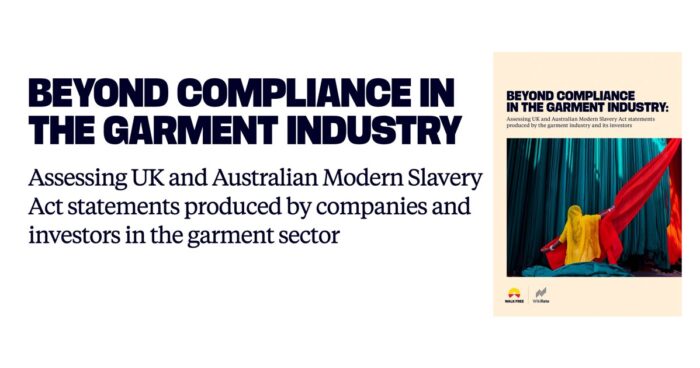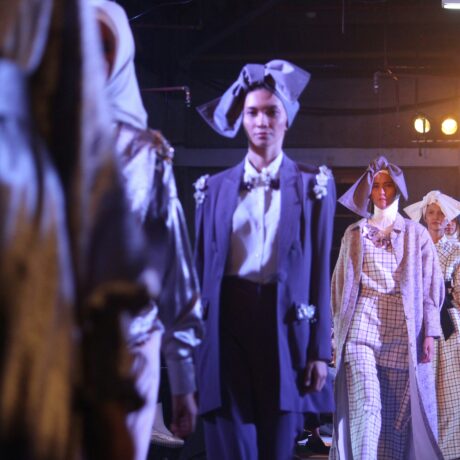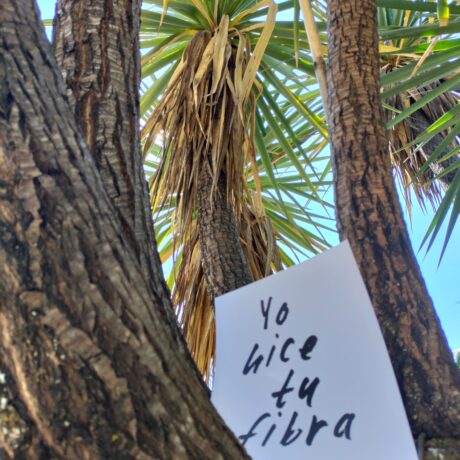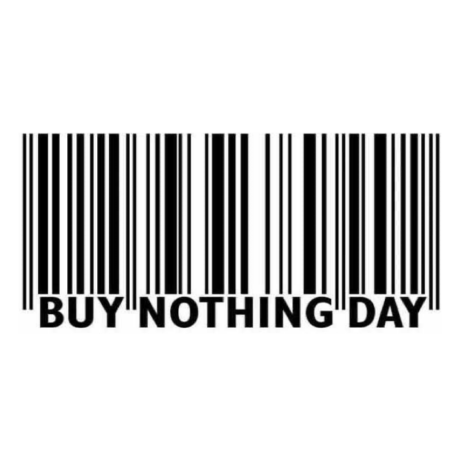Beyond Compliance in the Garment Industry
This is a guest blog post by Grace Forrest, founding director of international human rights group Walk Free.
Almost a decade from the founding of Fashion Revolution, there is much to celebrate. Greater transparency, new laws, and a growing global conversation that is moving the focus from final products to the people who sit behind them.
However, as a young woman who has grown up with these changes, and who now leads a human rights group focused on ending of modern slavery in all its forms, especially in global supply chains, I fear celebration is perhaps the wrong tone for this week.
From raw materials to fabric manufacturing, through to cutting and sewing, modern slavery remains an enduring feature of an industry that continues to trade ideals of glamour and beauty for meaningful action.
Over the past few years of radical supply chain disruption in the wake of COVID-19 and a growing awakening among conscientious consumers, some governments are stepping up to address import risks. And while the introduction of legislation is welcomed, it is now time we sharply assess the impact and effectiveness of these laws – and where things are not working, call it out.

Walk Free and WikiRate’s new report Beyond Compliance In The Garment Industry report assesses the modern slavery statements of 100 of the biggest fashion companies in the UK and Australia under their obligations under the UK and Australian Modern Slavery Acts. The results are sobering:
-
33% of modern slavery statements did not meet minimum requirements around the publication of their statements.
-
35% did not identify modern slavery risks in their supply chains.
-
More than a quarter didn’t disclose any supply chain detail at all – a depressing reality nine years on from #WhoMadeMyClothes.
-
43% did not mention supporting workers affected by the COVID-19 pandemic.
In an industry with a deep aspiration for luxury, it was striking that luxury brands largely performed worse than non-luxury brands, with some of them showing a blatant disregard for the legislation altogether. Only 61% of luxury companies stated they were taking steps to address modern slavery risks such as paying a living wage or not sourcing from high-risk countries, compared to 85% of non-luxury brands.
I believe this comes from direct pressure from consumers like you, but it’s scary that while we’ve kept our eyes on those who are continuous offenders, those who are meant to be “leading” this industry still place such little weight on not only this movement but their clear legal obligations as companies. Sadly, as both Acts have no penalties, the heavy weight of holding these brands to account falls once again on the consumer. We could not even find reports from Louis Vuitton Australia and Dolce & Gabbana UK.
While the garment industry comes in for deserved criticism for its wilful blindness to what goes on in its own business and supply chains, this report is also a big wake up call for politicians who should be holding them to account. What’s the point of laws if they are ignored without any consequences? It’s window dressing at best and makes a mockery of the accountability that should now be our norm.
Once, we would have looked at these Modern Slavery Acts and said “it’s a good start”. But we are way beyond that now. If fashion won’t come to the table, we need governments to force them. The Australian Modern Slavery Act has been in force for more than three years and is currently going through a mandatory review. Walk Free and other civil society and advocacy groups will be pushing hard to strengthen the Act to ensure it includes mandatory human rights due diligence as well as penalties for non-compliance.
We are also tackling the executives and investors who sit above these CEOs who continue to place profit over basic human rights. We must continue as a movement to spotlight the people who make our clothes, and in 2022 still struggle to earn a living wage.
For luxury brands, it is unacceptable that where consumers are paying top prices there continues to be no guarantee that workers are protected and paid fair wages. In addition to limited transparency over the source of the raw materials used to produce these clothes. With one in five cotton garments being traced back to Xinjiang in China (where there are widespread reports of state-imposed forced labour of the Uyghur population) there truly is no guarantee that fast fashion AND luxury brands aren’t complicit in egregious human rights abuses.
Fashion and investment are intrinsically linked through the financial markets, where stocks in fashion houses are traded. Walk Free’s 2018 Global Slavery Index demonstrated the scale of those markets when it found that Australia alone imported more than US$4 billion in fashion products at risk of being produced by forced labour. (The next edition of the Global Slavery Index is due out later this year.)
But Beyond Compliance found that investors were not leveraging the role they could play in driving better practices because they don’t have enough oversight of the companies they sink their money into. The truth is, respecting legislation and managing social impacts should see long-term value for companies. But in an industry in which fast profits talk, too many investors are taking a see-no-evil, speak-no-evil approach.
Evil must be spoken of because it remains abundant in this industry. If these companies won’t disclose what robust action they are taking to tackle human rights abuses despite the laws that govern them, we will continue to work alongside lawmakers to create stronger legislation to not just improve standards but to force companies to respond and take action that actually protects people. The human rights due diligence laws being discussed across Europe show huge promise for raising this standard. Change is coming, even if it is clumsy and slow.
We must also not underestimate the power of calling these brands out. Because if transparency is the first critical step in creating a fairer, safer industry, we must continue to point out anyone who is holding the entire industry back.
Fashion, its moguls, influencers, models, and designers, must dispel the culture of impunity and lift the veil of secrecy that has infringed the human rights of millions of people and their families for generations. Forced labour, green-washing, window-dressing, and half-arsed compliance is not going to cut it.








